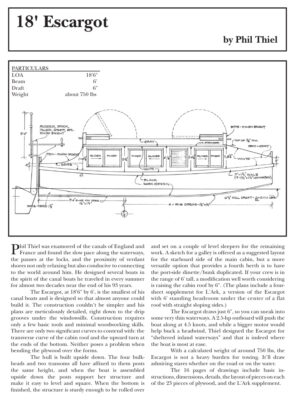
18' Escargot
The original print version of this article can be viewed as a PDF or purchased from the WoodenBoat Store.
Join to view PDF Purchase Phil Thiel's Escargot PlansPhil Thiel was enamored of the canals of England and France and found the slow pace along the waterways, the pauses at the locks, and the proximity of verdant shores not only relaxing but also conducive to connecting to the world around him. Near the end of his 93 years, he designed several boats in the spirit of the canal boats he traveled in every summer for almost two decades.
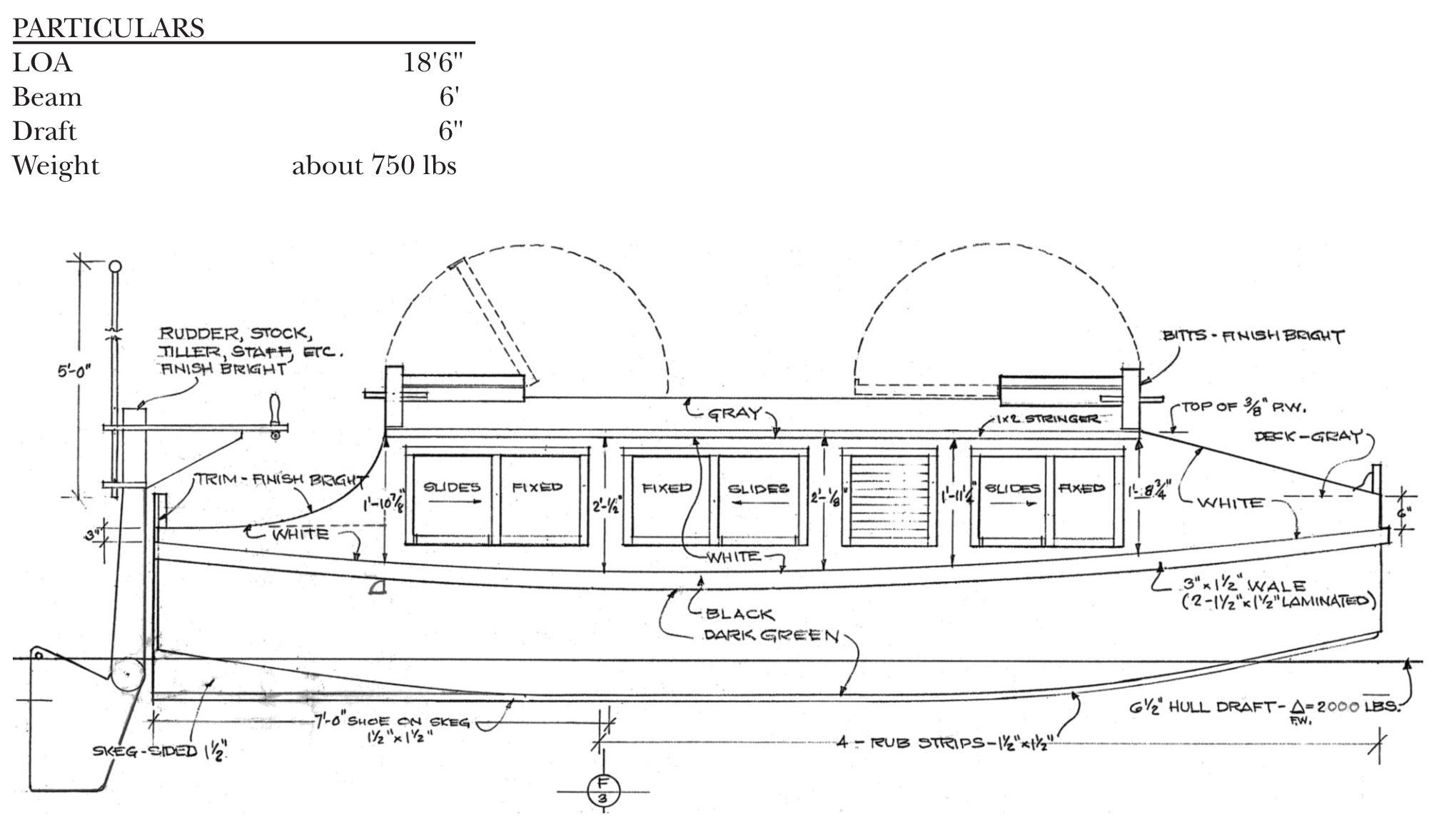
Escargot Particulars
The Escargot, at 18’6″ by 6′, is the smallest of his canal boats and is designed so that almost anyone could build it. The construction couldn’t be simpler and his plans are meticulously detailed, right down to the drip grooves under the windowsills. Construction requires only a few basic tools and minimal woodworking skills. There are only two significant curves to contend with: the transverse curve of the cabin roof and the upward turn at the ends of the bottom. Neither poses a problem when bending the plywood over the forms.
The hull is built upside down. The four bulkheads and two transoms all have affixed to them posts the same height, and when the boat is assembled upside down the posts support her structure and make it easy to level and square. When the bottom is finished, the structure is sturdy enough to be rolled over and set on a couple of level sleepers for the remaining work. A sketch for a galley is offered as a suggested layout for the starboard side of the main cabin, but a more versatile option that provides a fourth berth is to have the port-side dinette/bunk duplicated. If your crew is in the range of 6′ tall, a modification well worth considering is raising the cabin roof by 6″. (The plans include a four-sheet supplement for L’Ark, a version of the Escargot with 6′ standing headroom under the center of a flat roof with straight sloping sides.)
The Escargot canal boat draws just 6″, so you can sneak into some very thin waterways. A 2.5-hp outboard will push the boat along at 4.5 knots, and while a bigger motor would help buck a headwind, Thiel designed the Escargot for “sheltered inland waterways” and that is indeed where the boat is most at ease.
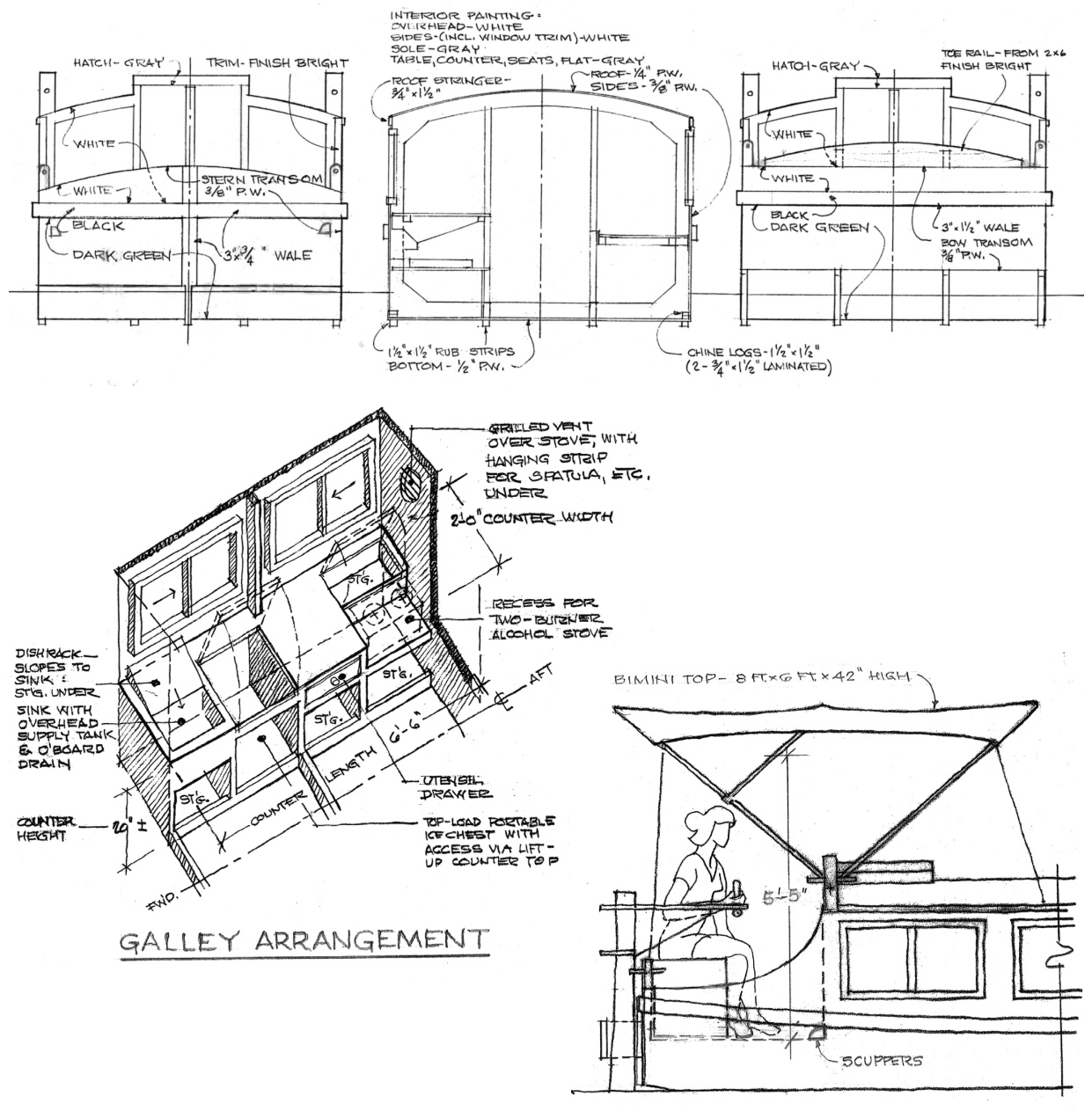
Escargot Patterns
With a calculated weight of around 750 lbs, the Escargot is not a heavy burden for towing. It’ll draw admiring stares whether on the road or on the water.
Plans for the Escargot canal boat include 16 pages of drawings with basic instructions, dimensions, details, the layout of pieces on each of the 23 pieces of plywood, and the L’Ark supplement. Construction is considered “simple box-like” marine ply construction for the advanced amateur. Please note: page J which shows plywood needed omits the 1/2″ ply for the aft deck shown on page E.
Particulars
Length: 18′ 6″
Beam: 6′
Draft: 6″
Weight: about 750 lbs.
Propulsion: 2-5hp outboard, will gently push you to about 4 mph.
Skill needed: Basic
Plywood needed
8 sheets 4×8 – 1/4″ marine grade
8 sheets 4×8 – 3/8″ marine grade
6 sheets 4×8 – 1/2″ marine grade
Completed 18′ Escargot Canal Boat Images
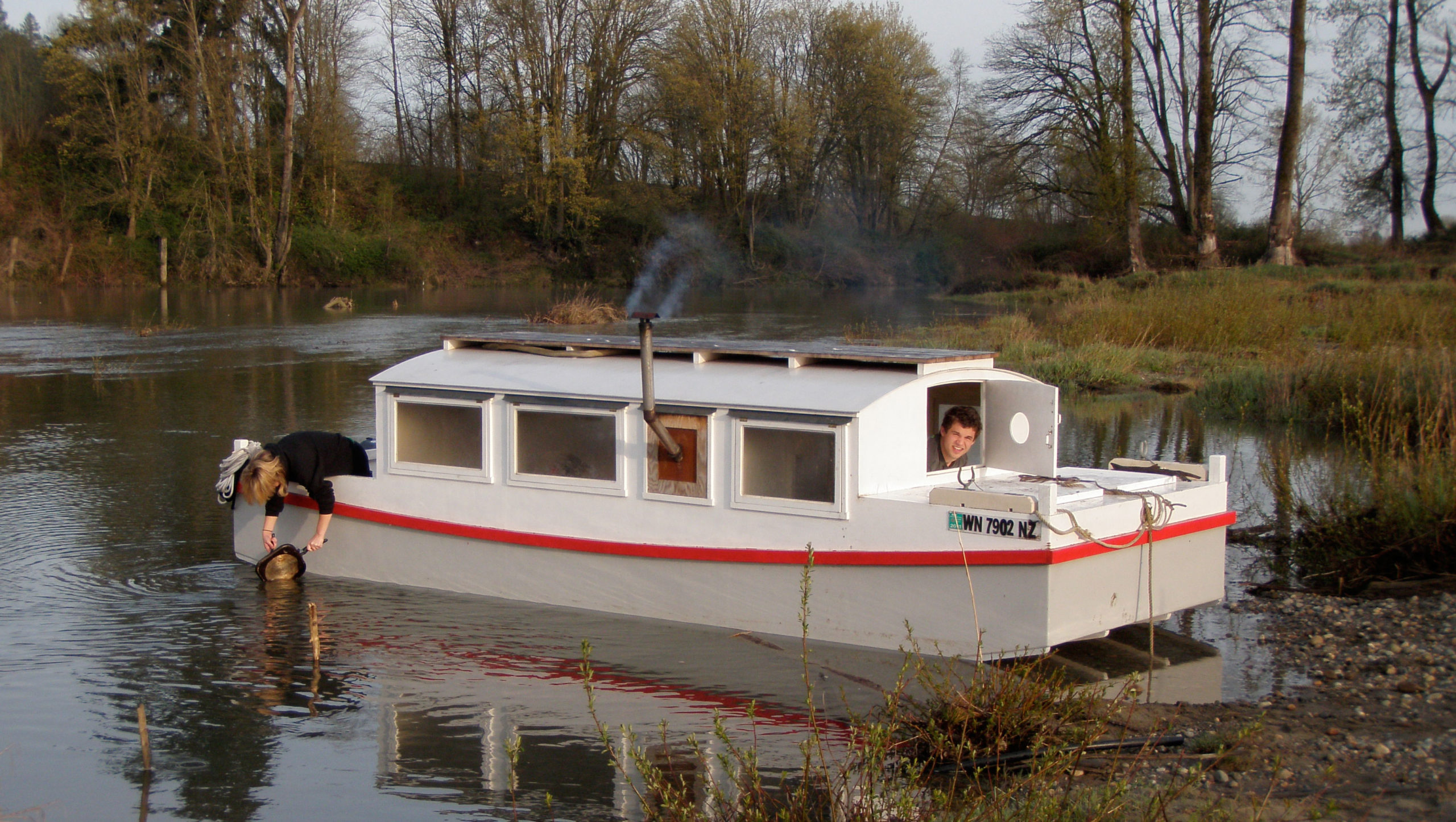 Photographs and video by the author
Photographs and video by the authorThe storage space on this Escargot was used to add a wood-burning stove to ward of the cold of off-season boating.
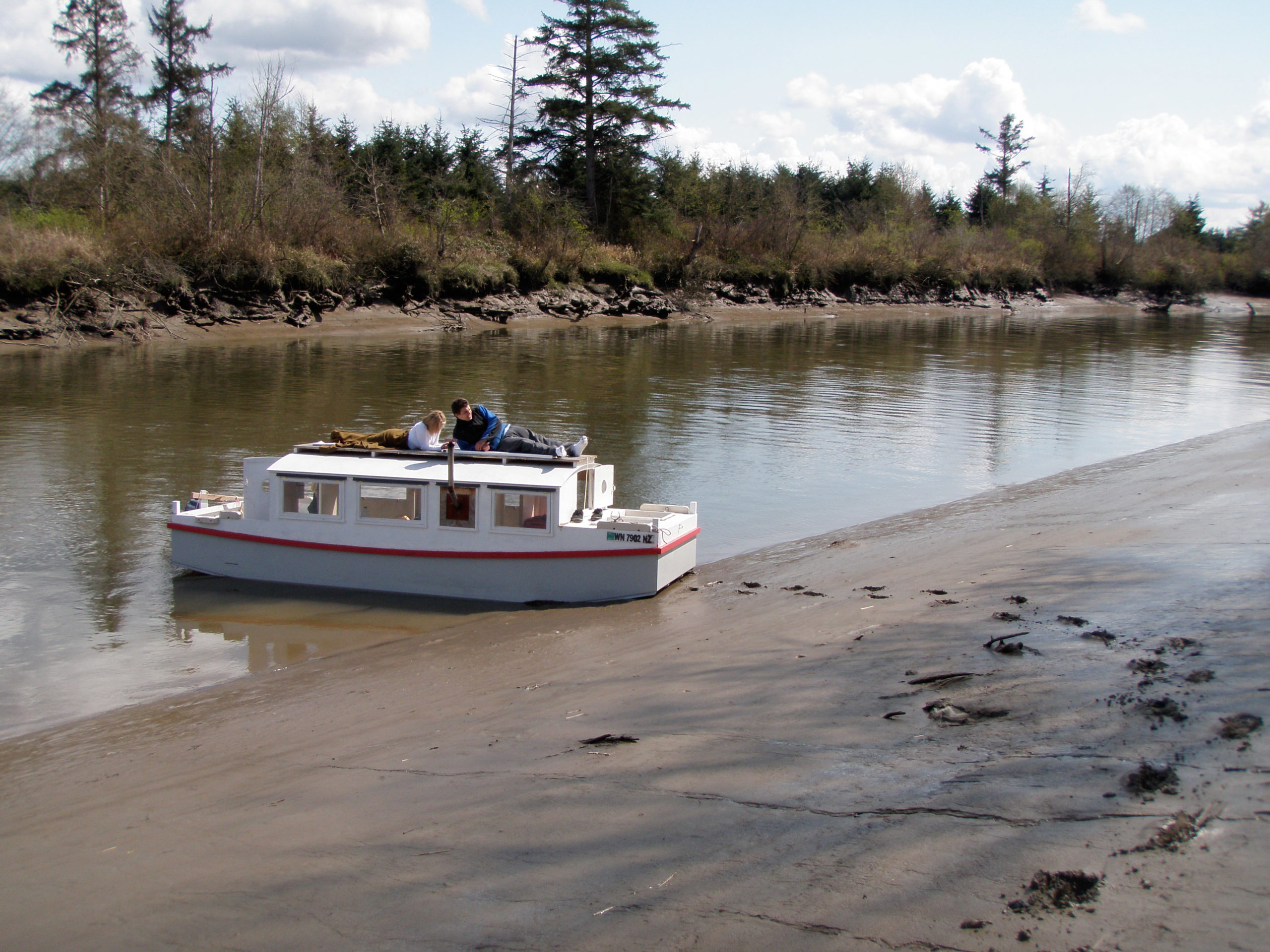
The catwalk added to the cabin roof proved to be a popular perch aboard this Escargot. The bow often allows stepping ashore with dry feet, though in this case , with very muddy boots.
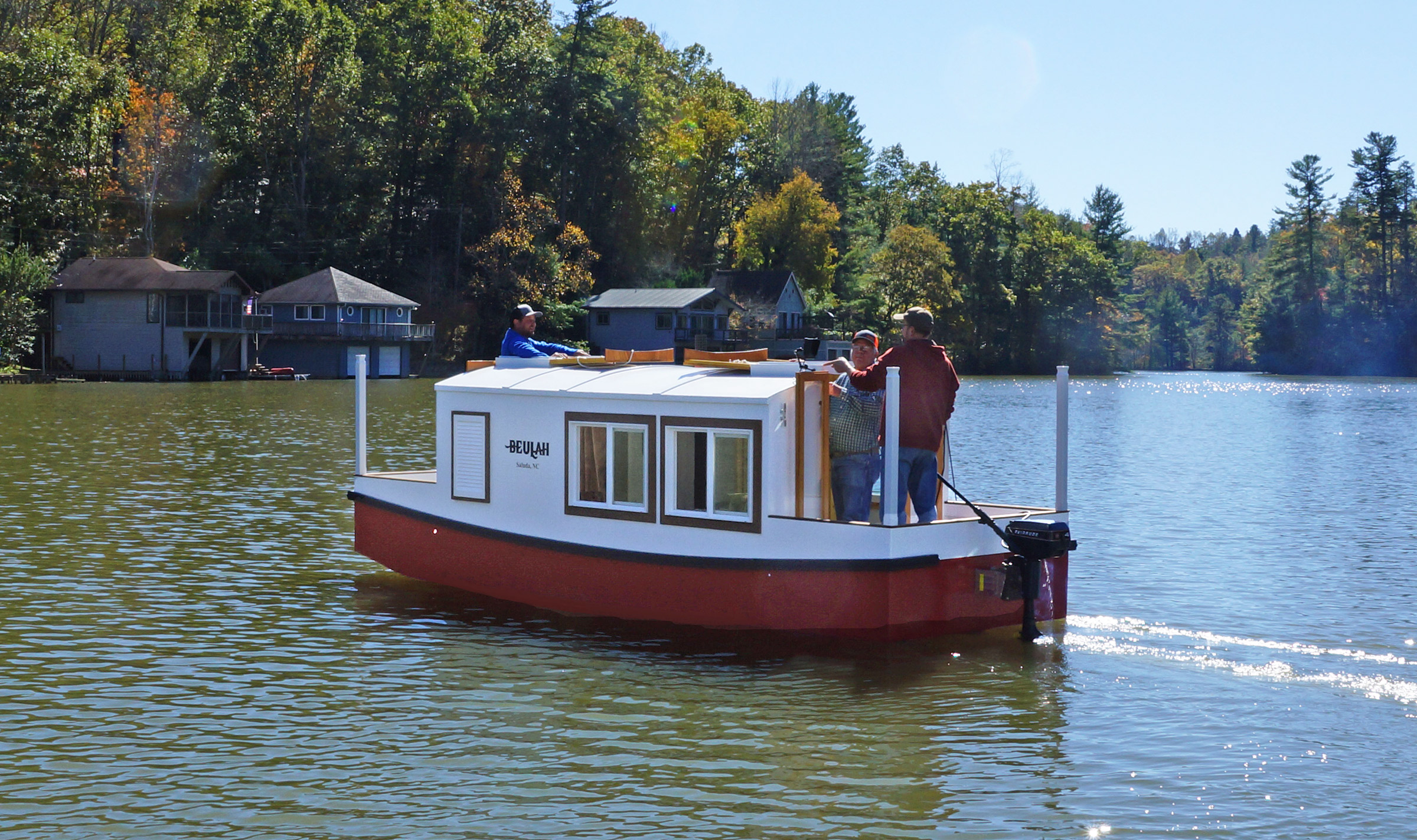
The Escargot plans include drawings and dimensions for a rudder, but BEULAH manages well enough being steered with the outboard. The cabin here has been raised.
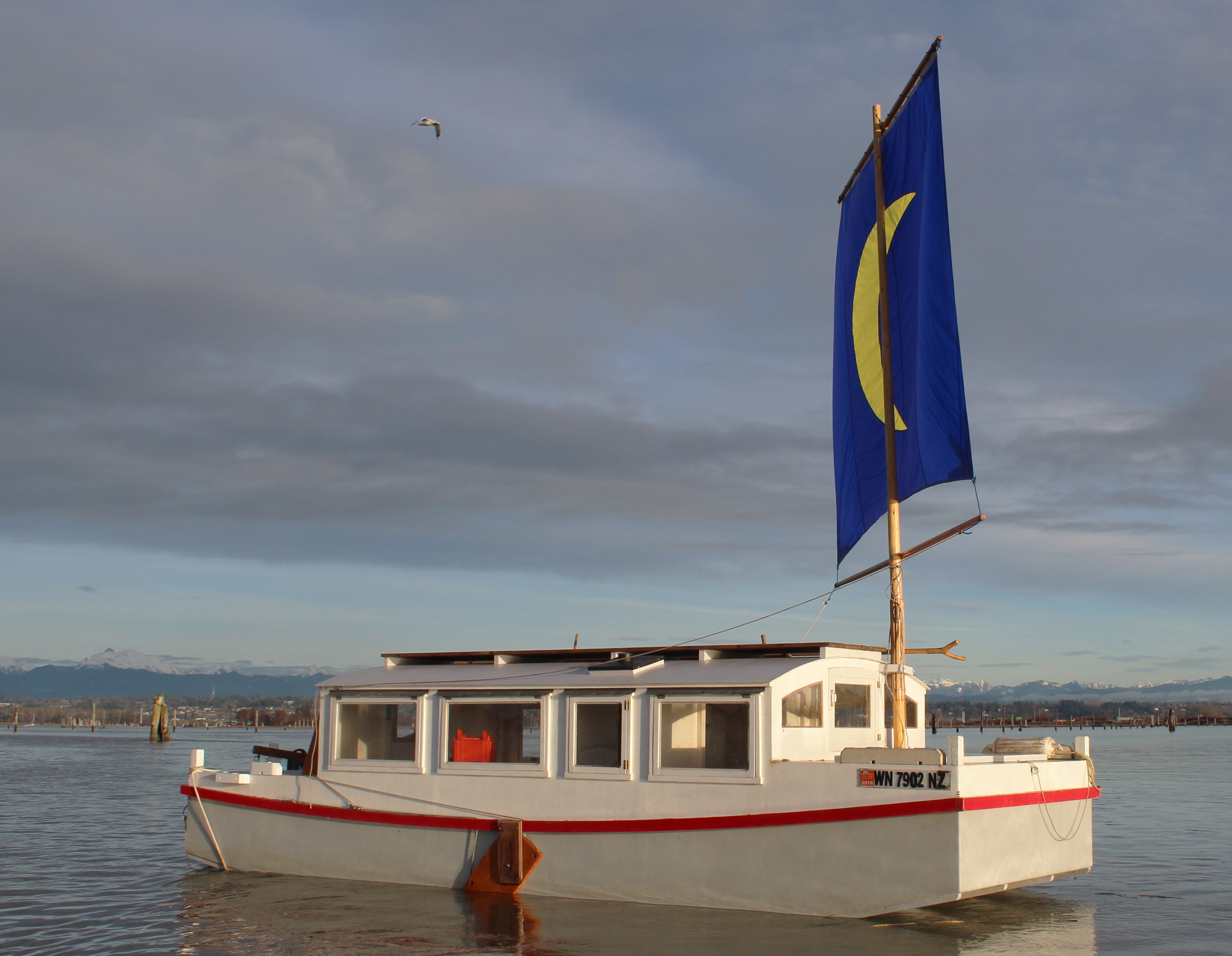
The Escargot boat wasn’t designed to sail but, equipped with a leeboard and a mast supporting a square sail, it makes for very pleasant sailing on runs and broad reaches.
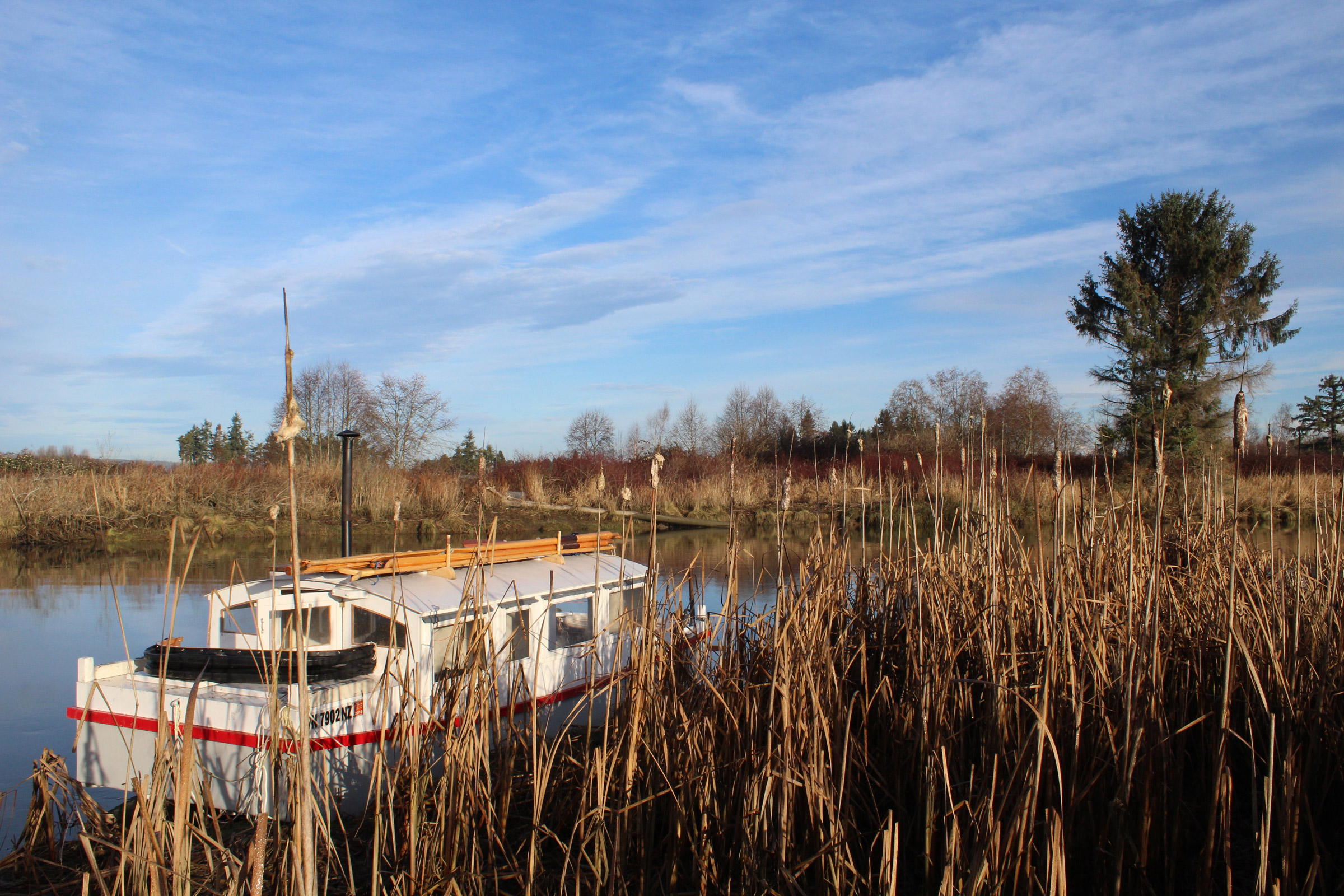
The Escargot provides a cozy nest for overnights in sheltered backwaters.
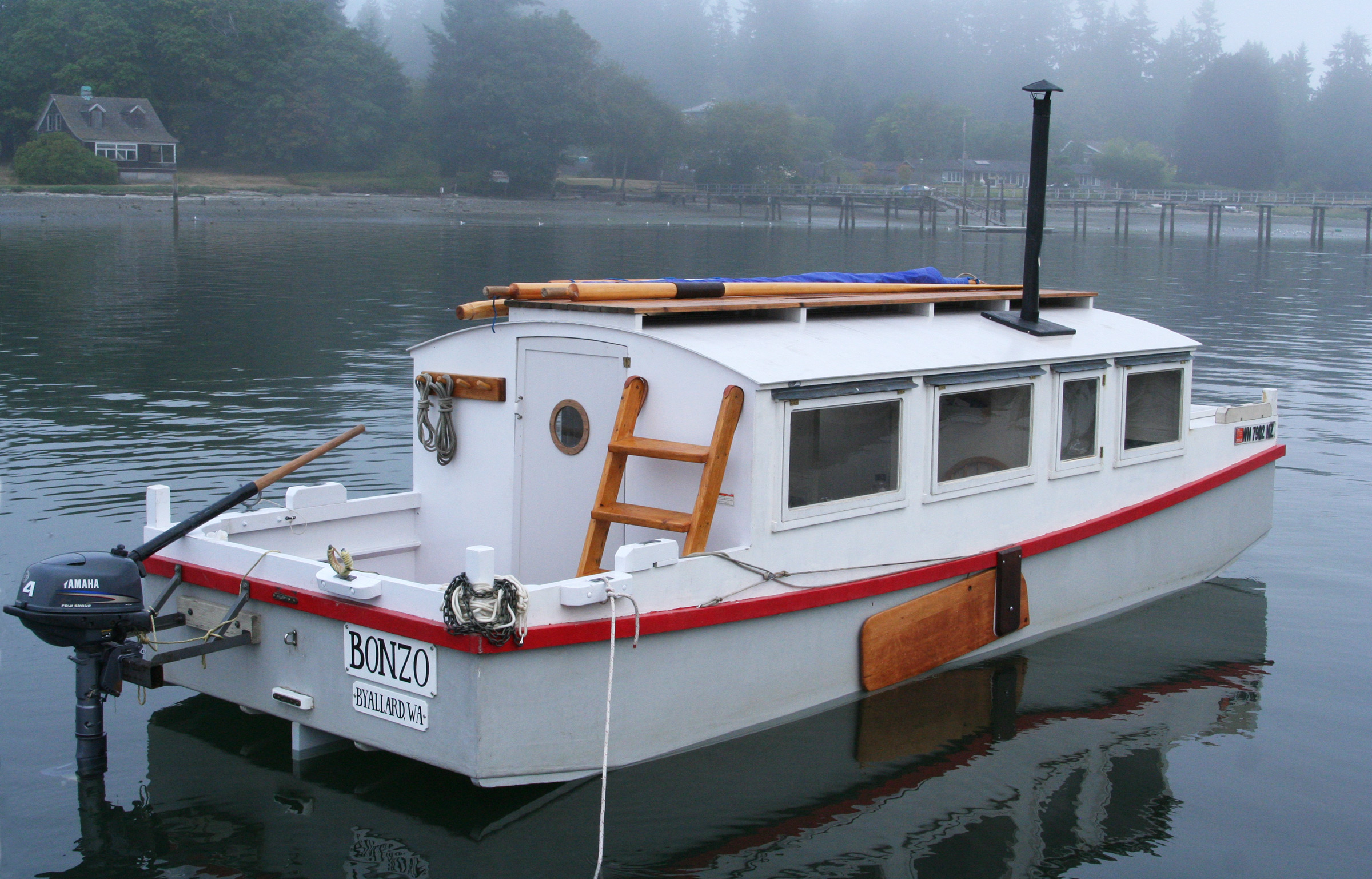
With its minimal draft and ample windage, the Escargot makes a lot of leeway when the wind is on the beam. The leeboard (not in the plans—see “A Leeboard for a Motorboat.”) solves the problem and greatly improves maneuverability by creating a pivot point for sharp turns.
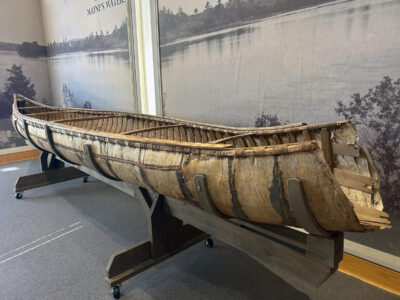
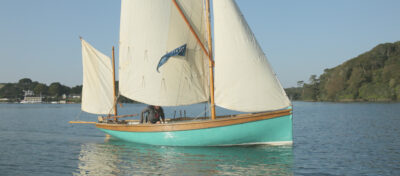
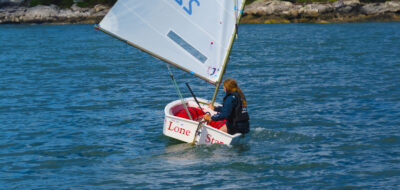
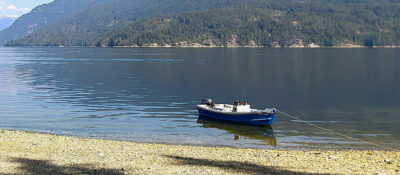
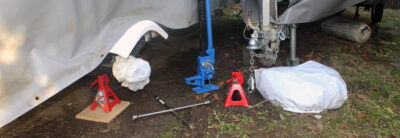
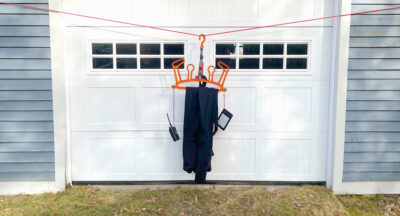
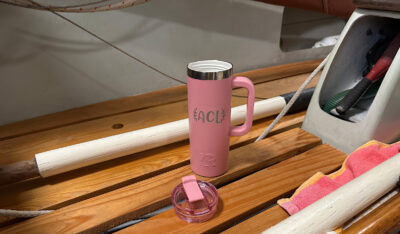
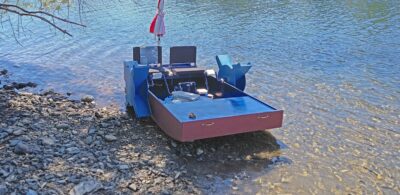

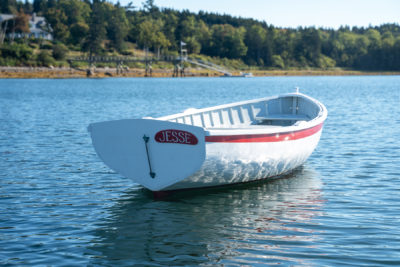
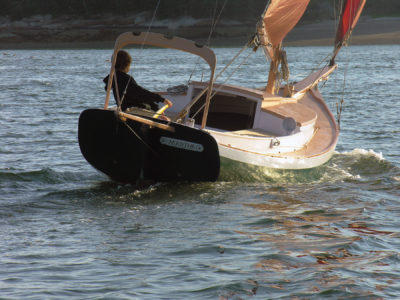
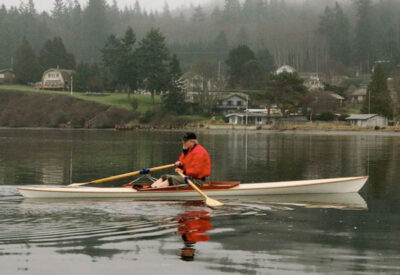
Join The Conversation
We welcome your comments about this article. If you’d like to include a photo or a video with your comment, please email the file or link.